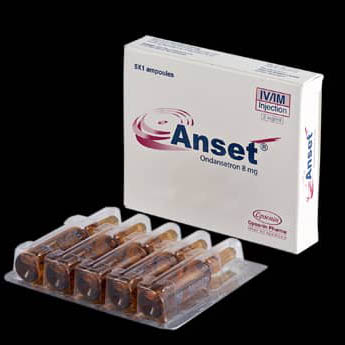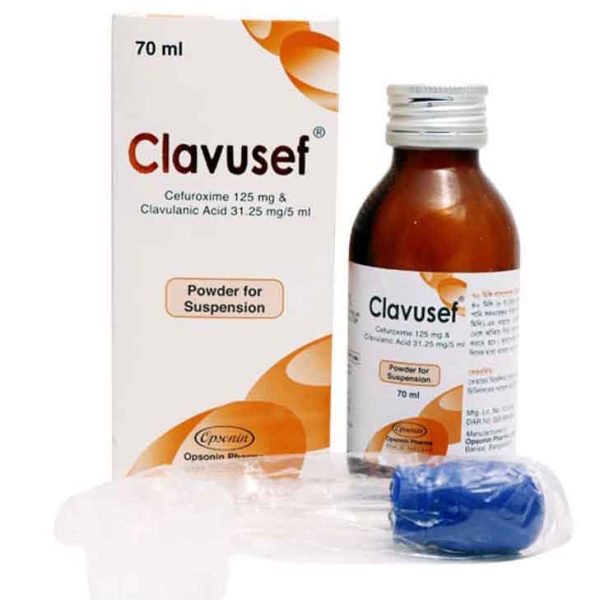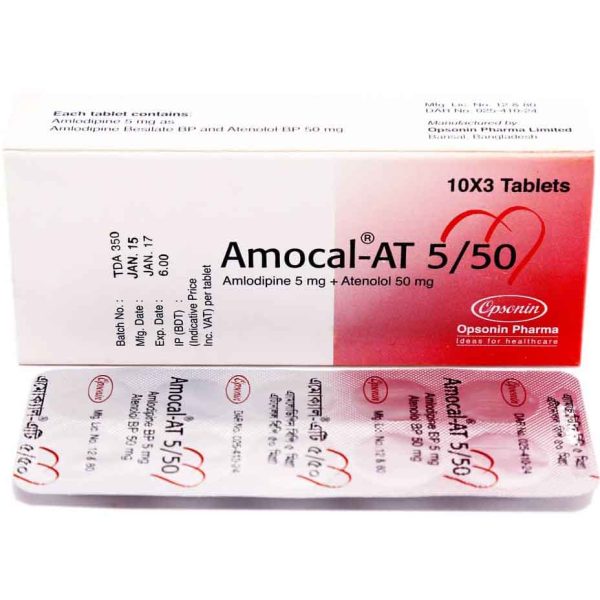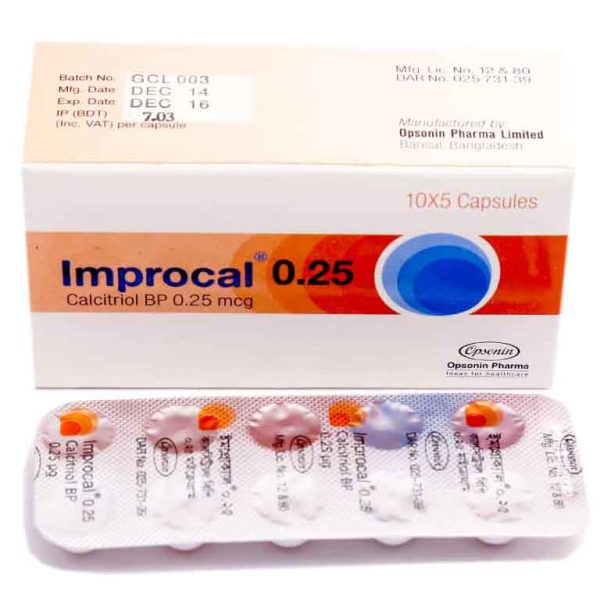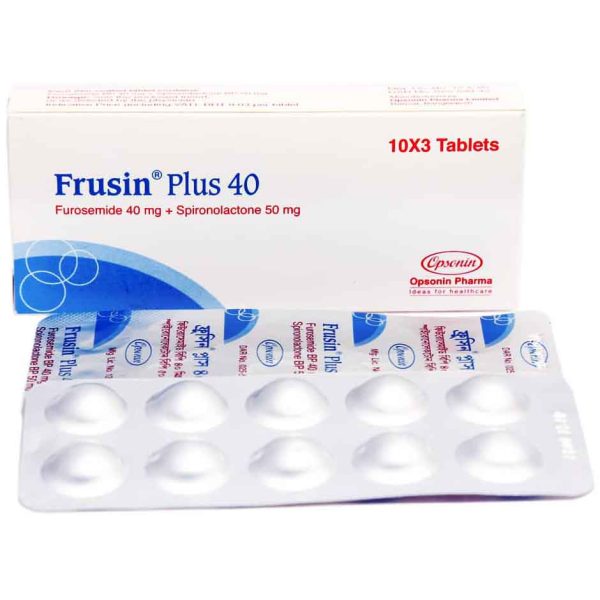Description
Brand Name: Anset 8mg/4ml.
Generic Name: IV Ondansetron 8mg/4ml.
Solution for Injection
The active substance is ondansetron (as hydrochloride dihydrate).
Other ingredients are sodium chloride, citric acid monohydrate, sodium citrate and water for injections.
Pregnancy
Before starting treatment, you must tell your doctor if you are pregnant or if you intend to become pregnant. Your doctor will then decide whether you should receive Ondansetron Injection.
Breast-feeding.
The ondansetron in Anset 8mg/4ml Injection may pass into mother’s milk. It is therefore better that mothers receiving Ondansetron Injection do not breast-feed.
Taking other medicines.
Please inform your doctor or pharmacist if you are taking or have recently taken any other medicines, even those not prescribed.
This medicinal product contains less than 1 mmol sodium (23 mg) per ampoule, i.e. essentially ‘sodium-free’.
How to take Ondansetron Injection.
Daily dosage is fixed according to your individual need.
Your doctor will tell you how long your treatment with.
Ondansetron Injection can be prescribed for two reasons:
– to prevent feelings of sickness (nausea) and sickness (vomiting) or
– to treat nausea and vomiting.
For patients receiving chemotherapy and/or radiotherapy that causes nausea and vomiting:
The recommended dose is 8 mg given by intravenous injection (into a vein) or
intramuscular injection (into a muscle), immediately before chemotherapy followed by an 8 mg tablet after 12 hours.
What Anset 8mg/4ml is and what it is used for.
Anset 8mg/4ml is a solution for injection, which is available as colourless glass ampoules containing 8 mg of ondansetron per 4 ml of solution. Ondansetron Injection is packed in
carton boxes of 5 ampoules.
The active substance of Ondansetron Injection belongs to a group of medicines known as antiemetics and antinauseants being used to prevent vomiting and nausea induced by some medical treatments.
2. Before you take Ondansetron Injection.
For patients receiving chemotherapy that causes severe nausea and vomiting any of the following dose schedules are recommended:
8 mg given by intravenous or intramuscular injection, immediately before chemotherapy
– 8 mg given by intravenous or intramuscular injection immediately before chemotherapy, followed by two further intravenous or intramuscular doses of 8 mg 2 to 4 hours apart, or by an intravenous infusion (drip) of 1 mg per hour for up to 24 hours.
– 32 mg given as an intravenous infusion (drip), over not less than 15 minutes, immediately before chemotherapy.
Do not take Ondansetron Injection.
– if you are allergic to ondansetron or any of the other ingredients.
After the initial Ondansetron injection you may be given tablets or suppositories for up to 5 days to prevent any further nausea and vomiting.
Take special care with Ondansetron Injection.
– if you are allergic to other antiemetic medicines
– if you have intestinal obstruction.
– if you suffer from severe constipation.
– if you have any liver disease.
If prescribed for a child, the dose depends on your child’s weight and height, and is given by intravenous injection immediately before chemotherapy followed by a 4 mg tablet 12 hours later, which can be continued twice a day for up to 5 days following chemotherapy.
Also tell your doctor if you are taking any of the following medicines:
– Phenytoin
– Carbamazepine
– Rifampicin
– Tramadol.
To prevent nausea and vomiting after an operation:
The usual adult dose is 4 mg given as an intravenous or intramuscular injection before the operation.
For children aged 2 years and over the dose is 0.1 mg per kilogram of body weight, up to a maximum of 4 mg, given as an intravenous injection before the operation.
To treat nausea and vomiting after an operation:
The usual adult dose is 4 mg given as an intravenous or intramuscular injection.
For children aged 2 years and over the dose is 0.1 m g per kilogram of body weight, up to a maximum of 4 mg, given as an intravenous injection.
Patients with moderate or severe liver disease:
The total daily dose should not be more than 8 mg.
If you have the impression that the effect of Ondansetron Injection is too strong or too weak, talk to your doctor.
Ondansetron Injection should start to work soon after having the injection. If you continue to be sick or feel sick, tell your doctor.
If you think you may have missed a dose or had too much, let your doctor or nurse know.
4. Possible side effects.
Like all medicines, Ondansetron Injection can have side effects.
Ondansetron Injection is generally well tolerated. However, the following side effects may occur in some patients during treatment.
If any of the following rare side effects come on soon after having your injection, tell your doctor immediately:
– sudden chest tightness or wheeziness
– swelling of eyelids, face lips or tongue
– skin rash – red spots or hives (skin lumps)
– collapse
– upward rolling of the eyes
– abnormal muscular stiffness, body movements or shaking
-fits
– blurring of vision.
If you experience any of these symptoms, advise your doctor as soon as possible:
– irregular or slow heartbeat.
– dizziness or lightheaded feeling.
– headache.
– flushes of the face.
– feeling of warmth in the head or stomach
– Irritation and redness at the site of injection
– upset bowels, constipation.
– hiccups.
If you have any blood tests to check how your liver is working, this medicine may affect the results.
If you notice any side effects not mentioned in this leaflet, please inform your doctor or pharmacist.
5. Storing Ondansetron Injection.
Keep out of the reach and sight of children.
Do not store above 30°C. Keep ampoules in the outer carton to protect from light.
Ondansetron Injection should not be used if the ampoule is damaged or contains particles or is cloudy.
Do not use after the expiry date stated on the carton box.

